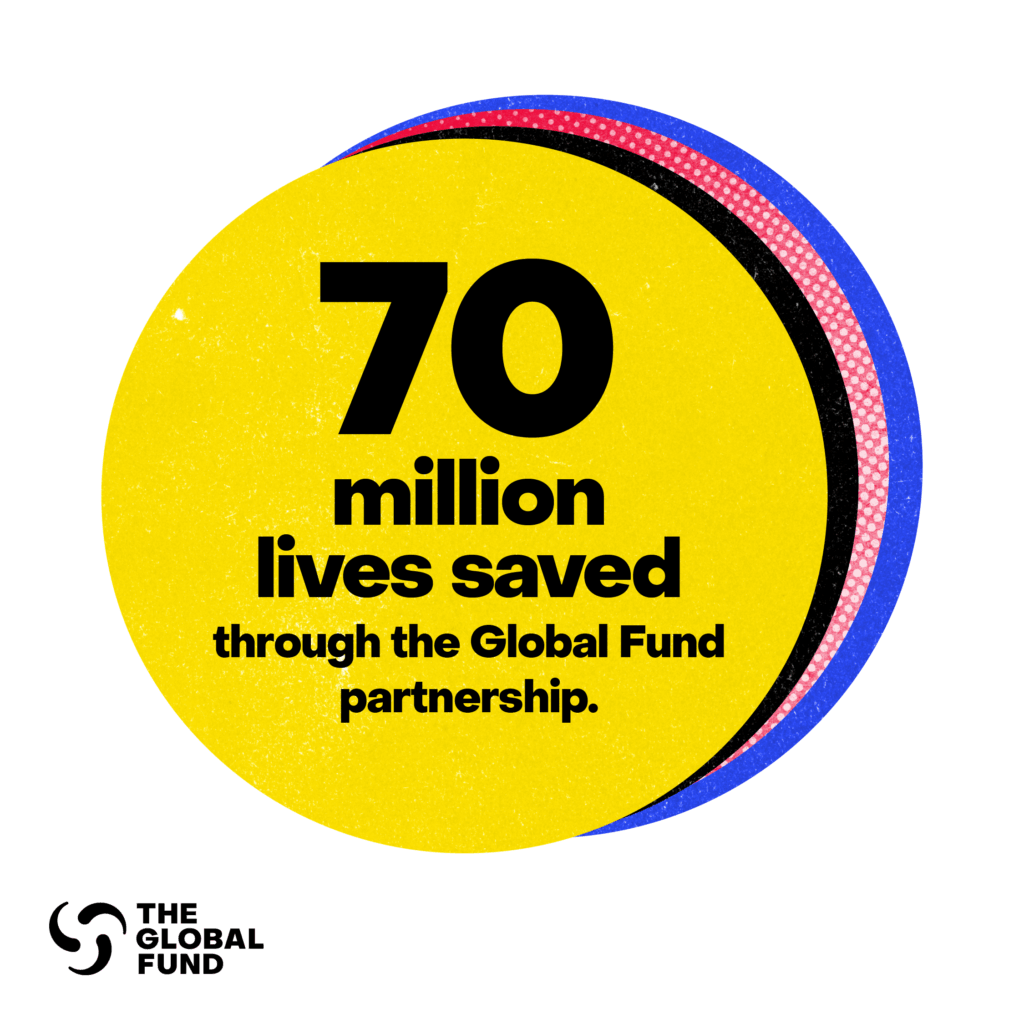Global Fund Results Report 2025


The 2025 Results Report captures a pivotal moment in the Global Fund partnership’s fight against HIV, tuberculosis (TB) and malaria. After decades of progress, global health is in crisis. Declining international funding is jeopardizing the fight against AIDS, TB and malaria – and with it, global health security.
Since Global Fund’s inception in 2002, health programs supported by the Global Fund partnership have saved 70 million lives. Their US$2.7 billion investment to strengthen health and community systems in 2024 has helped ensure that lifesaving HIV, TB and malaria programs can withstand today’s crises and continue to deliver impact.
Malaria is on a troubling trajectory. Rising conflict, disruptions from extreme weather events and increasing resistance to antimalarial drugs and insecticides have complicated efforts to combat malaria in 2024. The goal of ending the disease by 2030 looks daunting.
Yet we know that we can restart stalled progress and regain momentum. We have demonstrably effective tools, plus a pipeline of exciting innovations such as dual active ingredient (dual AI) insecticide-treated mosquito nets, new treatments and vaccines, as well as new tools, like gene drive mosquitoes being developed. Scaling up these tools and investing in critical health system capabilities is imperative.
In countries where the Global Fund invest, malaria deaths have been reduced by 29% between 2002 and 2023, even though the population in these countries has increased by 46%. Without malaria control measures, deaths would have increased by 94% over the same period. Between 2002 and 2023, malaria cases in countries supported by the Global Fund increased by 8%. Without malaria control measures, cases would have increased by 81% over the same period.
The population in sub-Saharan Africa has grown significantly over the past two decades, resulting in a larger number of people living in areas at high risk of malaria infection. Despite this, malaria programs supported by the Global Fund have drastically increased the percentage of population coverage with insecticide-treated nets, from 4% in 2002 to 61% in 2023. As a result, the absolute number of people protected from malaria has increased substantially – from 23 million in 2002 to 692 million in 2023 in sub-Saharan Africa. This expanded protection has contributed to a 51% reduction in the malaria mortality rate since 2002, along with a 26% decline in the incidence rate in countries supported by the Global Fund.
With the 8th replenishment campaign underway, it is important to note that an investment in the Global Fund is an investment in one of the world’s most effective mechanisms against infectious diseases. Every dollar received drives measurable health outcomes, fuels economic returns and delivers exceptional value for money.
Now is the time to rise to the challenge and mobilize our collective force to finally end AIDS, tuberculosis (TB) and malaria as public health threats.
